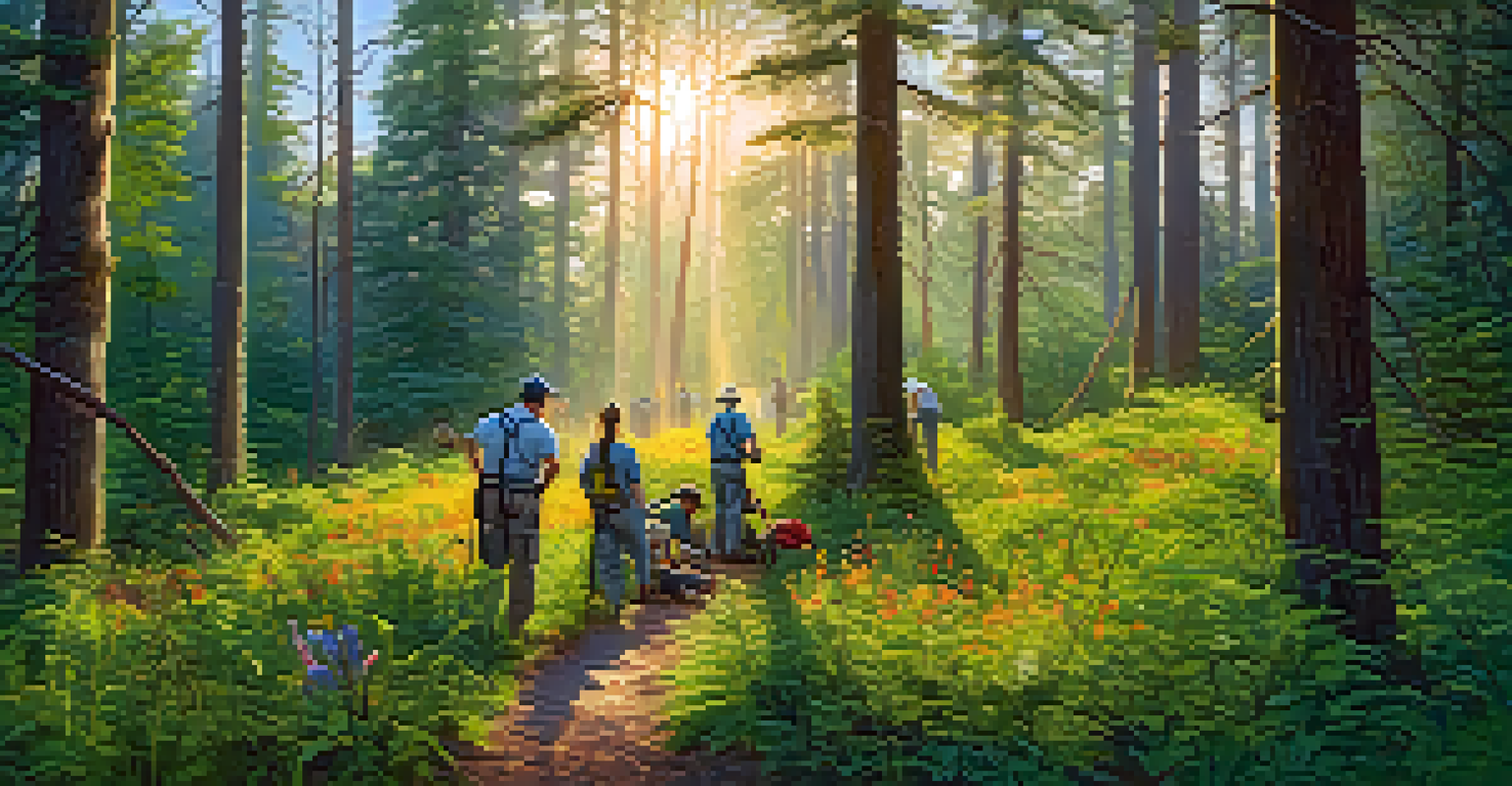Top 5 Volunteer Opportunities for Wildlife Conservation

1. Wildlife Rehabilitation Centers: Hands-On Care
Wildlife rehabilitation centers offer an exciting opportunity to work directly with injured or orphaned animals. Volunteers can assist with feeding, cleaning, and caring for these creatures, making a tangible difference in their recovery. It's a fantastic way to learn about different species and their unique needs.
The greatness of a nation and its moral progress can be judged by the way its animals are treated.
Many centers also provide educational programs, allowing volunteers to engage with the public and raise awareness about wildlife issues. This dual role not only helps the animals but also fosters a community that values conservation. Imagine sharing stories about the animals you've cared for and inspiring others to join the cause!
Additionally, volunteering at a rehabilitation center can be a stepping stone to a career in wildlife biology or veterinary medicine. The hands-on experience you gain can be invaluable, giving you insights that classroom learning often overlooks.
2. National Parks: Conservation and Education
Volunteering in national parks is another rewarding way to contribute to wildlife conservation. Parks often seek volunteers to help with various tasks, from trail maintenance to conducting wildlife surveys. This work not only helps preserve these natural spaces but also enhances the visitor experience.

As a volunteer, you may have the chance to educate park visitors about the local ecosystem and the importance of conservation efforts. Sharing your knowledge can empower others to appreciate and protect wildlife. Plus, spending time in nature is a fantastic bonus for any outdoor enthusiast!
Wildlife Rehab: Hands-On Experience
Volunteering at wildlife rehabilitation centers allows you to directly care for injured animals while gaining valuable insights into their needs.
Many national parks also host special events or programs aimed at fostering conservation awareness. Joining these initiatives can connect you with like-minded individuals and expand your understanding of environmental issues.
3. Marine Conservation: Protecting Our Oceans
For those passionate about marine life, volunteering for marine conservation projects offers a unique opportunity. Many organizations focus on protecting ocean habitats and species through beach clean-ups, coral reef restoration, and research initiatives. Each effort plays a critical role in sustaining marine ecosystems.
In every walk with nature one receives far more than he seeks.
Volunteers often work alongside scientists and conservationists, gaining hands-on experience in marine biology and environmental science. This collaboration not only enhances your knowledge but also allows you to contribute directly to impactful research. Imagine diving into crystal-clear waters to help restore a coral reef!
Additionally, marine conservation projects frequently include educational outreach components, teaching communities about ocean health and sustainable practices. Engaging with local populations can amplify your efforts and help foster a culture of conservation.
4. Wildlife Sanctuaries: A Safe Haven for Animals
Wildlife sanctuaries provide a refuge for animals that can no longer survive in the wild due to injury or habitat loss. Volunteering at a sanctuary involves caring for these animals, ensuring they live in a safe and enriching environment. This can include feeding, habitat maintenance, and even assisting with educational programs.
Many sanctuaries also focus on rehabilitation and release programs, giving volunteers the chance to see firsthand the impact of their work. Watching an animal return to the wild after your efforts can be one of the most rewarding experiences imaginable. It’s a powerful reminder of the importance of preserving wildlife.
National Parks: Conserving Nature
Volunteering in national parks helps preserve ecosystems and allows you to educate visitors on the importance of wildlife conservation.
Moreover, volunteering at a sanctuary can also enhance your understanding of animal behavior and conservation challenges. This knowledge can be crucial if you aspire to work in wildlife conservation or related fields.
5. Community-Based Conservation: Grassroots Efforts
Community-based conservation projects are essential for integrating local communities into wildlife protection efforts. These initiatives often focus on educating residents about sustainable practices and the value of biodiversity. As a volunteer, you can help organize workshops or participate in local conservation activities.
Engaging with communities fosters a sense of ownership and responsibility towards local wildlife. When people understand how their actions impact the environment, they are more likely to participate in conservation efforts. It’s about building relationships that benefit both wildlife and people.
These grassroots projects can also be incredibly diverse, ranging from habitat restoration to anti-poaching initiatives. Volunteering in such settings allows you to witness the direct impact of community engagement in conservation, making it a fulfilling experience.